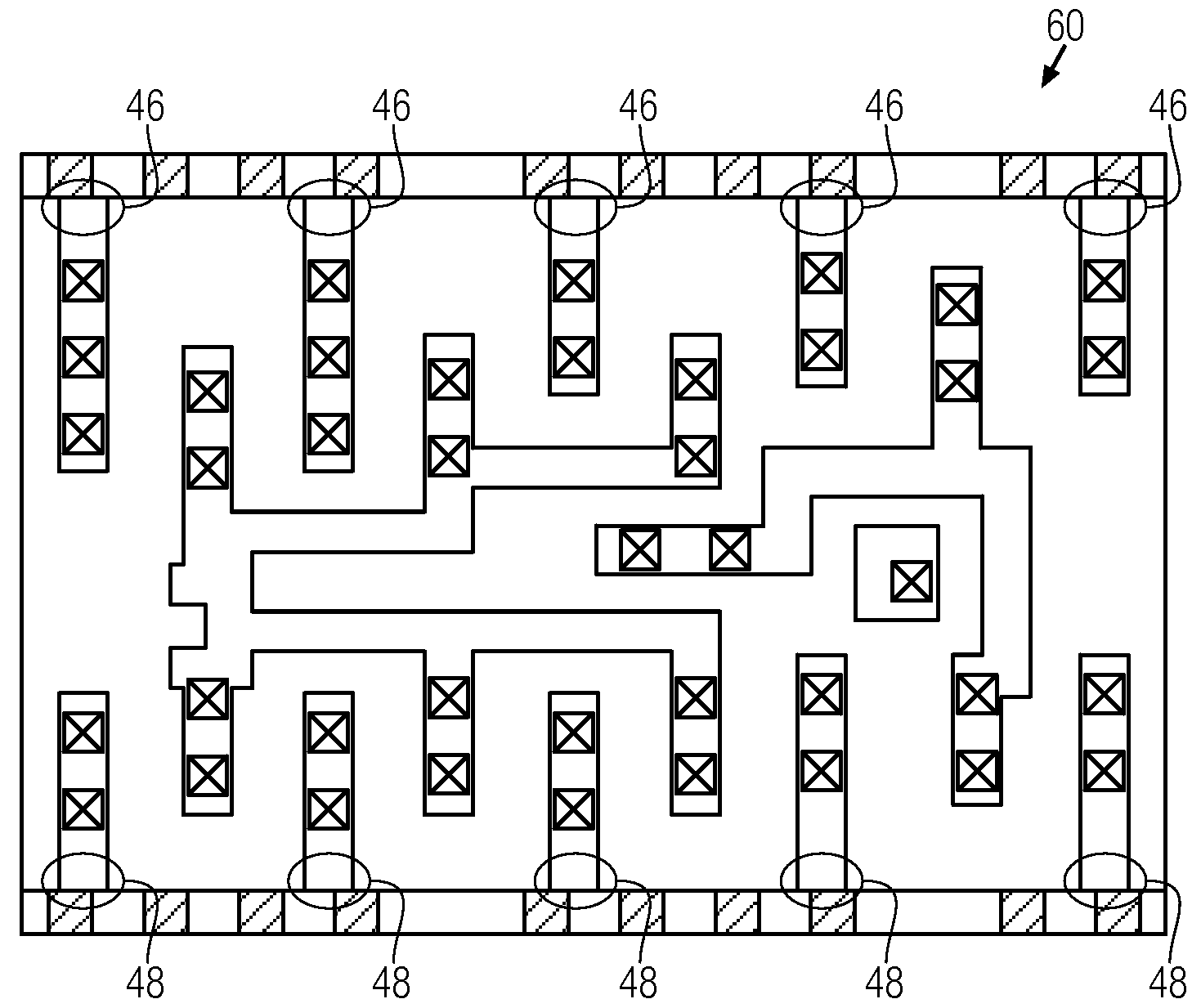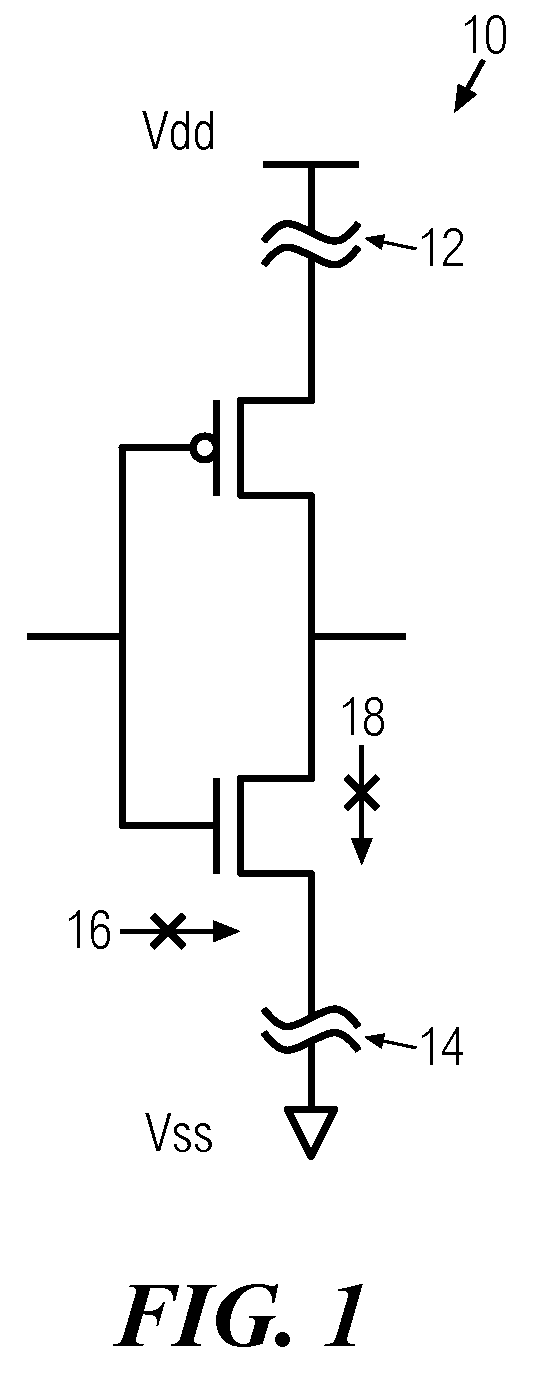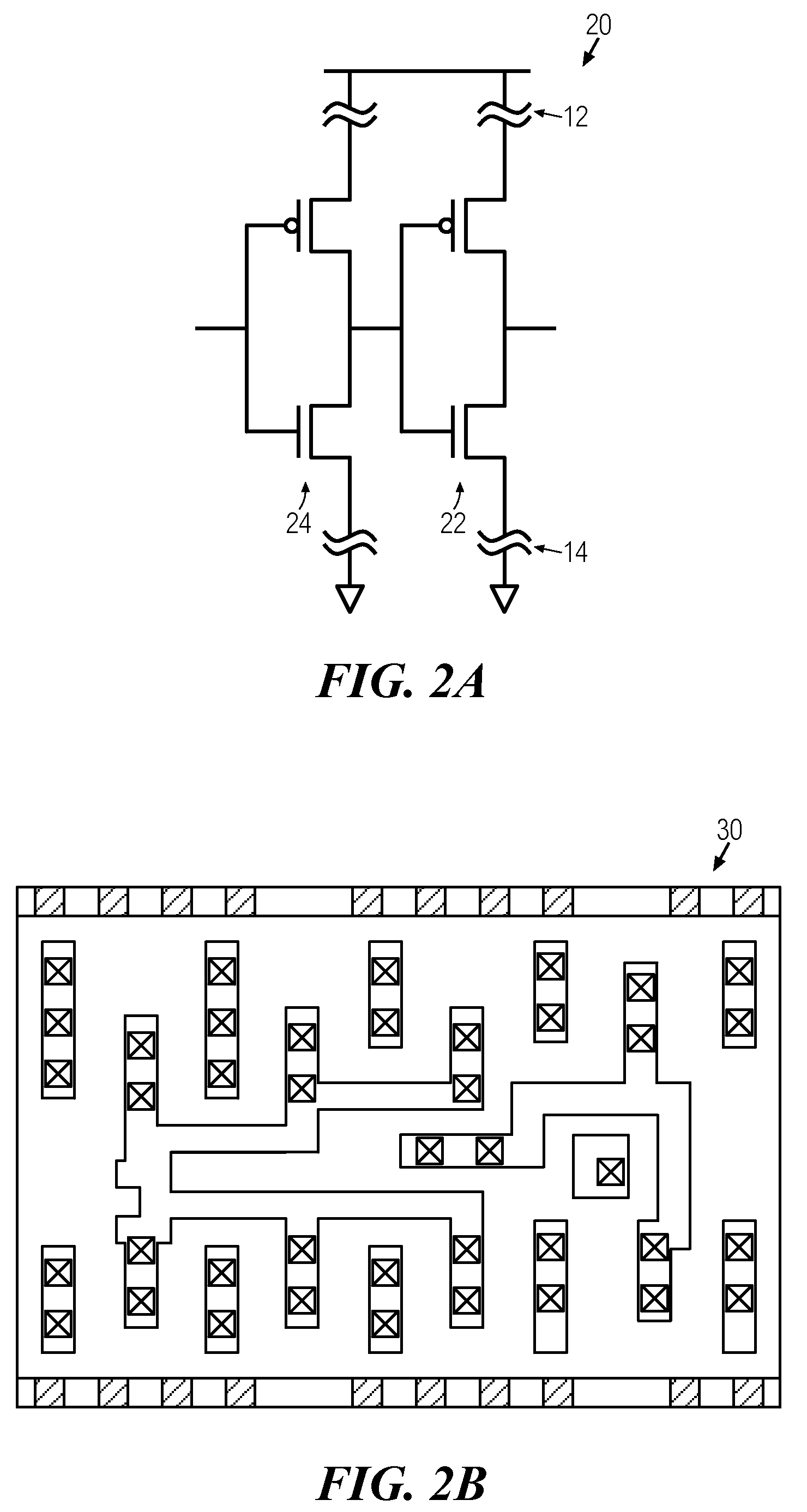Spare cell library design for integrated circuit
a technology of integrated circuits and libraries, applied in the field of separate cell library design for integrated circuits, can solve problems such as leakage through vdd, vss and the gate, and is not used to realize intended logic or work, and achieves the effect of reducing the amount of dispersed leakage power, and reducing the number of used
- Summary
- Abstract
- Description
- Claims
- Application Information
AI Technical Summary
Problems solved by technology
Method used
Image
Examples
Embodiment Construction
[0017]An aspect of the invention provides a cell based design layout of an integrated circuit having a function, the layout comprising a plurality of cell based base logic cells each having interconnected transistors to perform a logic function; a plurality of additional cells each having at least one transistor and having the power source unconnected to the additional cell, and the plurality of additional cells functionally unconnected to the plurality of base logic cells.
[0018]In an embodiment the at least one additional cell of the plurality of additional cells may have the power source interconnected to the additional cell, and the at least one additional cell may be functionally interconnected to the base logic cells. The additional cell may have at least one transistor having the source unconnected to the power supplies Vss and Vdd, and is functionally unconnected to the plurality of base logic cells. An additional cell may have the source of the at least one transistor interc...
PUM
 Login to View More
Login to View More Abstract
Description
Claims
Application Information
 Login to View More
Login to View More - R&D
- Intellectual Property
- Life Sciences
- Materials
- Tech Scout
- Unparalleled Data Quality
- Higher Quality Content
- 60% Fewer Hallucinations
Browse by: Latest US Patents, China's latest patents, Technical Efficacy Thesaurus, Application Domain, Technology Topic, Popular Technical Reports.
© 2025 PatSnap. All rights reserved.Legal|Privacy policy|Modern Slavery Act Transparency Statement|Sitemap|About US| Contact US: help@patsnap.com



